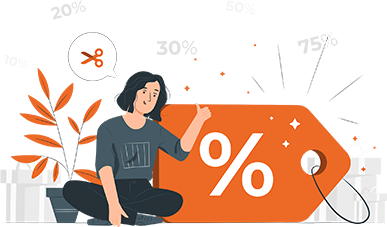Diversity in Self-Publishing
Rise of Children’s book

Just because children's books seem shorter and much simpler doesn't mean the publishing process is short and simple too. If you want to self-publish a children's book, there are certain factors you need to know before you begin with, so that you can march into the process with your eyes wide open.
Keep in mind that what provided below isn't a definitive guide to self-publishing a children's book—there are as many types of children's books as there are self-help books. This list gives you what to acknowledge when creating a typical children's book. (e.g., illustrations, full-color printing and type of cover.)
1) You Need a well-Qualified Illustrator.
The profit of any children's book depends on its illustrations. If the illustrations aren't appealing, it won't interest children. And it's also not about finding someone who's "good at drawing" either. A well-qualified illustrator understands the business and knows how to bring your story to life in a way that will translate to a printed book.
A quick rundown on how to work with a qualified illustrator: look at potential illustrators' portfolios, choose someone whose work speaks to you, have a written contract in place.
2) It Takes Time. A Lot of Time.
Good illustrations take time. If your illustrator has a waiting period, it could be weeks or months before they can get to your project. And that's just the beginning. You also have things like editing, yes even children's books should be edited, the layout of the interior and cover, and finally printing or eBook creation that has to happen before your book can be made available for purchase.
3) Your Purpose for Publishing will Influence Your Distribution Choices.
Distribution is how the books get from the printer to the reader, whether that's through bookstores, online retailers, or a direct reader sales page. Your purpose for self-publishing will influence your choice of printing books and distributing them. Do you want to see your book in bookstores, or do you want to create something to give your family? Do you have a readership established that you can direct to your website?
Your answers to these questions can make a huge influence on your book's profitability. For instance, you might make a couple of bugs from a sale through a bookstore if you print in large quantities (500 or more). But at the same time, you might make a similar amount through a direct reader sales page, without having to print so many books in advance.
If you don't want to print 500 or more copies, but you want to sell beyond from your family, consider selling through a direct-to-reader sales page. With the increase of tablet used by kids and adults, you can also consider going the eBook-only route.
4) Saving Money Now May Cost You Later.
Children's books aren't very cheap with quality illustrations, color printing (which is eventually more expensive than black and white), and the number of books you may have to print ahead of time.
While you might be tempted to find ways to save money now, remember that your decision may cost you money later. Save money on printing by going print-on-demand. Not only will the quality be good, but you might sell more books because they're priced less due to not covering the color printing.
What seems like a huge upfront investment may help your chances to benefit later on, so although you may want to cut costs, make sure you're not cutting corners.
5) You Don't Market to Children.
Children's books may be the only kind of book where you don't market to your target audience. Because children aren't the ones buying books, you market to the people who buy books for their children: the adults.
That means your job is more difficult: not only you have to write and publish a book that children will love, but also you have to write and publish a children's book that their parents and relatives wish to buy. Your book has to appeal to both audiences, which means it's especially important to publish a book that sets itself apart from other children's books.

